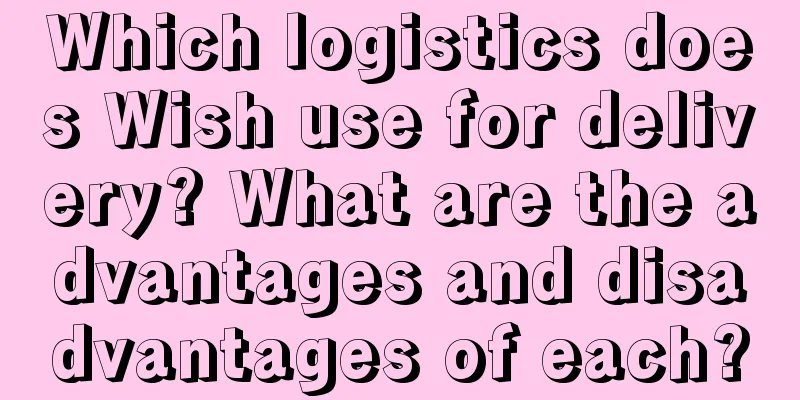Brand image, be practical!

|
In the second half of digital operations, no one can deny the importance of brand building in today's business operations. The question today is no longer whether companies should build brands, but how to build brands. Among the various theories and methods of brand building, the most core theory is the brand image theory. Half a century ago, Ogilvy said a famous saying that has been passed down to this day: every advertisement is a long-term investment in brand image. Brand image is the most important component of brand equity. It constitutes brand cognition, brand associations and reputation, and greatly affects brand awareness and loyalty. It can be said that brand image is the core of brand building, but when it comes to the actual value of brand image, everyone is empty. On the one hand, the role of brand image is weak. In the advertising industry, there has long been a view that brand image lacks sales power and communication is not direct. It is just icing on the cake for enterprises. Only those enterprises that are not short of money and have no worries about sales will create brand image. Can a product image bring sales? Many people are skeptical about this. On the other hand, the brand image is set vaguely. The fundamental reason for doubting whether brand image is useful is that the definition and source of brand image are very vague. In many companies, the so-called brand image is a set of adjectives set by the boss and management of the company : the brand is high-end and grand, the brand is warm and friendly, the brand is affordable and cares about consumers... This group of words either comes from consumer questionnaires and interviews, which reveal consumers' vague impression of the brand; or comes from the product's visual style and industry attributes . Mobile phone and car brands are technological, food brands are joyful, and beauty brands are fashionable and exquisite. Such a brand image does make people doubt whether it is really valuable and can really help sales. How can we create a real brand image today? How can we put the role of brand image into practice? 01 Brand image is native to users’ real life The biggest difference between products and brands is that products exist on the shelves, while brands exist in the minds of consumers. The knowledge that consumers have about products, the comprehensive associations, cognitions and memories they have about products, and the relationship they have with companies ultimately constitute the brand. In other words, the brand image is not set by the company, but determined by the users. In order to understand the brand image in the minds of consumers, the main method of analyzing and evaluating brand image in the past was to conduct consumer research, using questionnaires, in-depth interviews, projection methods, etc. to measure consumers' memory, evaluation, likes and dislikes of the brand. This approach first has a problem of accuracy. Because the sample size of the survey is limited, the granularity of the interview is not enough, and many questions in the questionnaire and interview are somewhat leading, the authenticity of the survey is questionable. Of course, the most fundamental problem with the survey is that it puts consumers in a specific environment and understands consumers through questioning, so they will unconsciously resist and falsify. In fact, the research method I personally recommend the most is the supermarket recording method that was commonly used in Europe and the United States in the past. Through observers or cameras in the supermarket, consumers’ purchasing behavior is tracked and recorded without their knowledge. Of course, this approach has certain ethical disputes and is difficult to implement in practice, but its advantage is that it takes place in real consumer life scenarios. Another issue with surveys is timeliness. Research is time-consuming, labor-intensive, and expensive. Many companies I have worked with in the past usually only conduct a systematic brand asset assessment once every one or two years, which means there is a large lag. In today's ever-changing business environment, companies urgently need to track changes in consumers' perception of brand image after a campaign is implemented or a round of advertising is completed, so as to optimize subsequent marketing actions. Or, after some major industry news and industry policy adjustments, social events and corporate events, they need to understand the changes in brand image as soon as possible to determine the company's business strategy. These are things that surveys cannot do. What should we do today? We need to return to the essence. Brand image is the consumer's perception and feeling of a brand. In the past, people would express this perception orally, talking about a brand in their daily lives with their relatives and friends, which formed indicators such as brand awareness, reputation, and word of mouth. So there is a saying that the best brand is spread by word of mouth. But now, people have the Internet and mobile phones, various social platforms and their own self-media. Today's consumers will search for brands, evaluate brands, and actively publish brand-related content on various platforms. These massive user voices are the most authentic brand existence and constitute the underlying foundation of indicators such as corporate brand image, brand personality, and brand value. The true brand image comes from the real life of consumers, the real original voice, which is not set by questionnaire design and keywords, but by looking at how users talk about the brand in real life environment and how they interact with the brand in various ways. Only in this way can we gain insight into what the brand really looks like in the minds of consumers. For brand practitioners, only by listening to the true voices of users can they find inspiration for content creation. Many years ago, before I helped client brands to develop strategies and write methods, I had a habit of looking at the after-sales reviews of the product on e-commerce platforms to study consumers’ needs, pain points, and concerns; I also searched for the brand on major content platforms to see what people were saying and how they evaluated the brand. At that time, I was thinking, if we had a tool that could collect these massive amounts of data, clean, organize and classify them, and get a comprehensive analysis of a brand, this would be of extraordinary value for gaining insight into the brand and implementing marketing promotions. Now, Bytedance Cloud Map has launched a product called " Brand Image Insights ", which is based on massive active voice data from a large number of users and can comprehensively and scientifically measure a brand's performance on Douyin. The Big Data Cloud Map breaks down users’ voice data into four indicators: mention volume, association, reputation, and preference . In my opinion, these four indicators form a logic of progressive evolution. First, we can see whether consumers have mentioned or searched for a certain brand, and we can compare the number of mentions with other brands in the industry. This indicator can measure the popularity and voice of brand building. Secondly, we can analyze what kind of cognition and association consumers have formed in the content that mentions the brand; whether the real brand image in user comments is consistent with the image that the brand wants to create in its communication and promotion. This indicator can provide direction for the implementation and optimization of brand marketing. Thirdly, we can also analyze the proportion of positive, negative, and neutral voices in the content in which consumers mention the brand. This way, we can know the degree of praise for the brand among consumers and help monitor the brand's reputation. Finally, among the positive and negative voices, we can also analyze the proportion of positive feedback that the brand receives when consumers mention both the brand and competing products. This indicator can assess the degree to which the brand is preferred by consumers and whether it has a competitive advantage in the market competition. This indicator is also very helpful in winning purchases. Together, they constitute the indicator system of brand image. For example, a new automobile brand used this tool to find a new way to market its brand. In terms of content strategy, it analyzes the brand topics and product keywords that users have discussed recently based on the number of mentions; and finds the key image tags that are consistent with brand communication and actual user mentions based on association and reputation, as well as the tags that users focus on. This has practical guiding significance for the output of content creativity. In terms of user strategy, the brand chose people who prefer the brand, people who have recently paid attention to and compared other car brands, and found people through tags that users follow. It captured these high-intent people who are truly interested in the brand and delivered advertising to improve conversion. In addition, since the data of brand image insight is updated in a timely manner, you can review the performance of any time period at any time, without being limited to the brand research conducted once every six months or once a year. Therefore, during the process of campaign development and delivery, you can monitor feedback and changes at any time, so as to adjust and optimize communication and promotion in a timely manner. For example, timely acquisition of consumers' original comments on the brand, timely follow-up of popular search terms and videos with high mention volume and high association, and checking whether consumers accept the content that the brand wants to convey, etc. This timeliness can ensure that the communication and promotion is always under the control of the brand, and the effect becomes better. In marketing, a basic common sense is that brand marketing should be done wherever consumers are. The insight into brand image is like this. Consumers search, evaluate, and post brand-related content on online platforms such as Douyin, so we also need to gain insight into brand image on these platforms. The insight into brand image must be generated in the real lives of consumers and must be based on a comprehensive understanding of consumer portraits, behavioral data, and real voices. The same is true for brand image building. The ultimate goal of brand building is to influence consumer behavior, and the main battlefield of brand building should be the place where consumers talk about the brand and interact with the brand. Douyin is one of the largest content and social platforms in China today. Consumers will comment on and purchase a brand on Douyin, so companies should build their brands on Douyin. In the past, companies used Douyin as a platform for promoting products and selling goods, but today, promoting products and selling goods must be supported by brand power. Only by building brands and promoting products together can we achieve the effect of integrating brand and effect, and achieve the effect of 1+1>2. 02 Brand image is implemented in corporate marketing scenarios The second point in transforming a brand image from virtual to real is that it must be implemented in the company’s real marketing scenarios and truly bring about business growth. The brand department has always been an unpopular department in the internal organizational structure of the enterprise. In the eyes of many people, it is a cost center rather than a profit center, a department that spends money but cannot see how it can help the company make money. Therefore, when the brand department proposes a marketing budget, it is often not confident enough. Its status within the company is not as good as that of the sales department and the e-commerce department. Within the marketing department, the people responsible for brand building cannot see the actual results and conversion figures like those responsible for live broadcast, advertising, and private domain. However, when the brand image can be implemented in actual marketing scenarios, bring tangible growth, and can directly empower e-commerce, media, live broadcast and other departments, then everything will be different. As we mentioned earlier, brand image can be broken down into multiple specific indicators. To implement the brand image, we need to know what the most critical indicators are in the company's specific marketing work, such as new product launches and brand renewals. By clearly adjusting which indicator, we can achieve marketing goals and create growth. Let’s look at a few cases of specific marketing scenarios. For example, the commander-in-chief. In today's home appliance market, young consumer groups are on the rise, which provides many emerging niche brands with opportunities for growth, while traditional leading brands are facing shocks. Against this background, the Leader brand released a new brand name "Leader" and a new brand logo, and launched a new product category "Beauty Refrigerator", hoping to complete its transformation towards younger customers. In this marketing scenario, Leader needs to do more than just promote new products and create hits. It also needs to increase the brand awareness of Leader and complete the construction from 0 to 1. Because of the lack of brand awareness, the effect of simply promoting products will be greatly reduced. To build a new Leader brand, the most important brand image indicator is the number of mentions , which allows more people to know the brand. This is the basis for establishing other brand indicators. Tongshuai's approach, on the one hand, is to conduct live streaming and streaming for silent groups, that is, those who have actively posted, commented on or searched for industry-related content and products but have never mentioned the brand. Tongshuai needs to awaken their awareness of the brand. On the other hand, it draws on topics and products that are discussed by users to construct marketing themes and content, create communication topics, and increase brand voice. Ultimately, with the support of a small budget, the number of mentions of the Leader brand on the event day increased by 370% compared to the day before, and the monthly mentions increased by 10% compared to the previous month. In the course of business operations, companies need to find the most critical brand image indicators based on different brand life cycles and marketing scenarios, and then adopt targeted marketing actions based on data performance to move the image indicators. For example, in the early stages of a brand’s creation or new product launch, the most desired outcome of communication and promotion is for consumers to know and remember it. Therefore, the key indicator is “volume of mentions”, and the association and preference levels are improved based on the “volume of mentions”. During the brand growth stage, the most needed result of communication and promotion is the continuous deepening of brand awareness and the achievement of growth. Therefore, the key indicators lie in the enrichment of "associations" and the continuous improvement of "reputation." In the brand maturity stage, for specific marketing scenarios such as brand reshaping and brand renewal, the result that the brand needs most is to rebuild consumer relationships and consumer attitudes. Therefore, the key indicators are to establish new brand associations on the one hand, so that users can recognize the brand, and to change consumers' reputation and increase their preferences on the other hand. At the same time, it is also very important to ensure the volume foundation and ensure that the brand has more positive volume. Another example is Qifu. In February 2023, the new national standard for milk powder was implemented. HMO, a super nutrient, has received great attention, and its search index has surpassed lactoferrin for the first time in six months. This is a very good opportunity for Wyeth, which has been deeply engaged in HMO ingredients for many years. Therefore, during the 618 promotion, Qifu conducted a timely diagnosis of the health of its brand image and found that the brand performed well in terms of likeability and purchase intention, but lacked perception in terms of its image such as "leading in scientific research" and "good reputation", especially with little correlation with HMO, and its overall voice on the Douyin platform was also insufficient. Obviously, the marketing goal of Enfamil is to move the "association" indicator based on the gap between the expected image and the actual cognition of consumers, establish a direct connection between the brand and the HMO ingredients, and let consumers form a new brand image: a brand with leading scientific research and super ingredients. Therefore, in the advertising campaign, Qifu focused on the differentiated selling points of super ingredients and created some topic tags, such as #启甫HMO, #有破力如启甫, etc., to unify the previously scattered expert content. At the same time, Qifu increased its advertising campaign for the precise group of new parents, and increased the mention rate of Qifu in HMO-related topics and content. According to the changes in industry dynamics, Qifu timely diagnosed and adjusted its brand strategy and quickly seized new market opportunities. The final results also showed that Qifu effectively conveyed the core elements and selling points of its products to consumers, and the association of the brand's core keywords increased by 360%. Brand building has undergone tremendous changes today. Brand images that were once considered to be very empty and hollow are now being implemented. On the one hand, it is to combine the brand with data and the real voice of consumers to discover the most authentic and perceptible brand image. On the other hand, it is to implement the brand image into the company's specific marketing goals and results. Based on the clearer guidance and operational steps provided by products like Bytedance's "Brand Image Insight", brand image building can truly play a role in solving corporate business problems. New tools and methods can help brand image not only have a source, but also be implemented. It is real, tangible and effective. THE END. I am empty-handed. The author of "Essential Copywriting", former senior marketing director of a listed company, mentor of Kotler Master Inheritor Program, and industry mentor for master's students in journalism and communication at Jiangxi University of Finance and Economics. There is a saying in "Crouching Tiger, Hidden Dragon": "If you clench your hands, there is nothing inside; if you open your hands, you will get the whole world." So call me empty-handed. |
<<: Miaoya Camera, is it over?
>>: China's own "poor ghost meal" is selling like hot cakes on Douyin
Recommend
How to quickly analyze a marketing case in 6 minutes?
I understand a lot of principles, but they are not...
“Hitchhiking culture” is very popular. Why do young people like to find hookups nowadays?
This article analyzes the recently popular "p...
Taking advantage of "Fengshen", whose gameplay is more "toxic" among Alipay, Shuyi and Zhihu?
The popularity of the movie "Investiture of t...
How to apply for Shopee parent-child account? What are the requirements?
In the process of operating a Shopee store, it is ...
What are the creative angles for good copywriting?
This article focuses on the creativity of good cop...
How come a worker becomes famous for just cooking sloppy food?
Food bloggers are nothing new, but a new type of b...
Luckin Coffee gift boxes priced at 19.9 yuan sold out in 200,000 units. How can brands seize the new bonus of gift-giving?
Luckin Coffee created a sales volume of 200,000 yu...
How to start a business on Douyin from scratch?
This article shares the principles of the Douyin s...
What is the best control level for Amazon ACOS? What are the stages?
Everyone knows Amazon well. When you open a store ...
Creating Popularity: New Discoveries in Film and Television Promotion in 2023
Many buzzwords or popular contents come from movie...
How do young people today celebrate the New Year?
This article mainly describes the way contemporary...
How to open a local store on Amazon? Are there any advantages?
Many people want to open stores on the Amazon plat...
The best private domain looks like: there are catering membership cards with hundreds of millions of sales
This article introduces how to expand the micro-sh...
What we really need is "profitable growth"
There are several obvious changes this year. Have ...
What are the techniques for Amazon distribution? What are the differences between Amazon distribution and boutique products?
In today's e-commerce field, Amazon, as one of...









